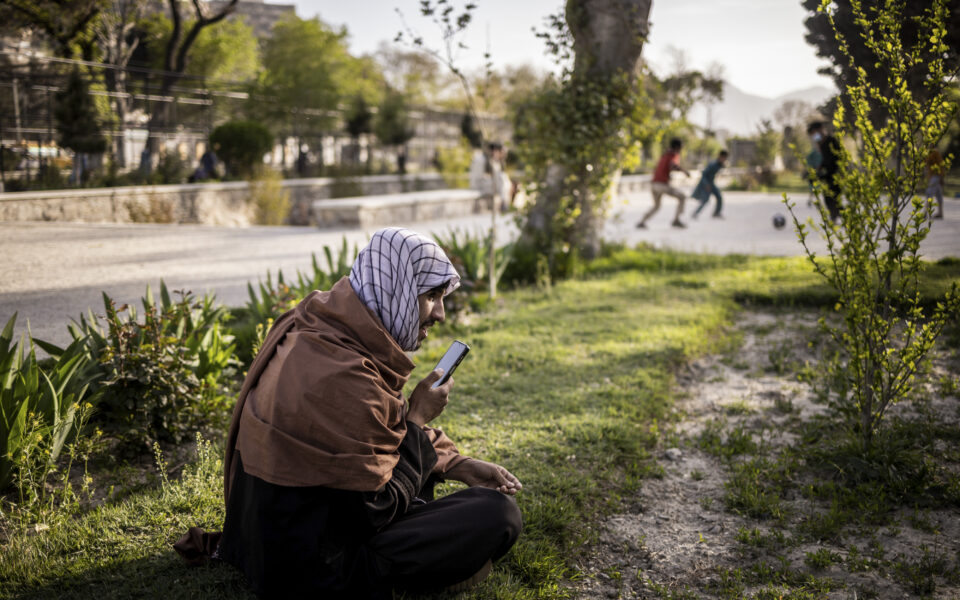The Taliban government runs on WhatsApp. There’s just one problem

Late one night two months ago, a team of Taliban security officers assembled on the outskirts of Afghanistan’s capital to prepare for a raid on an Islamic State group hideout.
As the zero hour approached, the men fiddled with their automatic rifles while their leader, Habib Rahman Inqayad, scrambled to get the exact location of their target. He grabbed his colleagues’ phones and called their superiors, who insisted they had sent him the location pin of the target to his WhatsApp.
There was just one problem: WhatsApp had blocked his account to comply with U.S. sanctions.
“The only way we communicate is WhatsApp – and I didn’t have access,” said Inqayad, 25, whom The New York Times has followed since the Taliban seized power in August 2021.
He was not alone. In recent months, complaints from Taliban officials, police and soldiers of their WhatsApp accounts being banned or temporarily deactivated have become widespread, disruptions that have illuminated how the messaging platform has become a backbone of the Taliban’s nascent government. Those interruptions also underscore the far-reaching consequences of international sanctions on a government that has become among the most isolated in the world.
The United States has long criminalized any form of support for the Taliban. Consequently, WhatsApp, which is owned by Facebook, scans group names, descriptions and group profile photos on the messaging app to identify users among the Taliban and block their accounts, according to a spokesperson for the company.
The policy has been in place since U.S. sanctions were enacted more than two decades ago. Even when the Taliban were an insurgency, the ban handicapped some fighters who relied on the app because it catered to people with neither literacy nor technological skills. Using WhatsApp’s voice message feature, they could send messages and listen to the verbal instructions from their commanders with the press of a button.
But over the past two years, the Taliban’s reliance on WhatsApp has become even more far-reaching as smartphone use has proliferated and 4G networks have improved across Afghanistan with the end of the U.S.-led war. As the Taliban have consolidated control and settled into governance, the inner bureaucratic workings of their administration have also become more organized – with WhatsApp central to their official communications.
Government departments use WhatsApp groups to disseminate information among employees. Officials rely on other groups to distribute statements to journalists and transmit official communiqués between ministries. Security forces plan and coordinate raids on Islamic State group cells, criminal networks and resistance fighters from their phones on the app.
“WhatsApp is so important to us – all my work depends on it,” said Shir Ahmad Burhani, a police spokesperson for the Taliban administration in Baghlan Province, in northern Afghanistan. “If there were no WhatsApp, all our administrative and nonadministrative work would be paralyzed.”
The use of WhatsApp among the Taliban’s ranks began during the war, as the app gained popularity worldwide and cellphone towers began sprouting up across Afghanistan. Today, experts estimate that around 70% of Afghanistan’s population has access to a cellphone. Like millions across the globe, Afghans depend on WhatsApp’s speed and flexibility to communicate with each other and the outside world.
During the war, Taliban fighters took photographs when they attacked government outposts and shared them on WhatsApp with their superiors and the insurgency’s media wing, said Kunduzi, a commander in the Taliban Army’s 2nd Regiment, who preferred to go only by his surname because he was not authorized to speak to the news media. “WhatsApp was a simple tool, and sending videos and photos via email used to take a lot of work and time,” he added.
Since the Taliban seized power, the popularity and accessibility of WhatsApp among the group’s ranks has grown rapidly. Former Taliban fighters began using their smartphones around the clock, no longer afraid that Western forces could use the signal to track or target them in drone strikes, they say.
As thousands of former fighters took up new posts as police and soldiers in major cities that were now under Taliban control, they also gained access to proper cellphone stores.
One recent afternoon at a cellphone shop in central Kabul, the capital, a dozen Talibs crowded onto wooden benches, waiting for their service tickets to be called. Since the new government began doling out salaries to Taliban fighters turned government employees, cellphone providers have been overrun with new customers. Many vendors can no longer keep up with the demand. Across Afghanistan, stores have reported shortages of SIM cards and have had to turn customers away.
Sitting in the waiting room, Muhammad Arif Omid, 21, fiddled with his paper ticket in one hand and his Samsung smartphone in the other. Originally from Helmand Province in the south, Omid bought his first cellphone and SIM card around four years ago – when doing so was a days- or weekslong effort.
“We were living in the mountains – we couldn’t go to the shops in cities to get a phone or SIM,” he said. Instead, Talib fighters had to track down secondhand dealers in rural provinces under the movement’s control or give money to a relative to shop for them. Nowadays, he says, getting a nice smartphone and data plan is easier than ever.
But the cat-and-mouse game of shutting down accounts has become a headache for officials in the Taliban administration – an almost daily reminder that the government they lead is all but shunned on the world stage.
No foreign government has formally recognized the Taliban administration in Afghanistan. The U.S. government’s freeze on billions of dollars of assets belonging to the Afghan central bank has hindered the economy. Travel bans have kept Taliban leaders from meeting some dignitaries abroad. Some social media platforms including Twitter and YouTube, appear to have interpreted the sanctions more loosely and have allowed Taliban members to use them, but the country’s most popular messaging app is technically off-limits.
“We have one group of 50 people belonging to the Islamic Emirate, and 40 to 45 WhatsApp numbers in it have been blocked,” said Abdul Mobin Safi, a spokesperson for the police in Takhar province, in northern Afghanistan, referring to the Taliban administration as the Islamic Emirate of Afghanistan.
Safi has been among those barred – a move that caused him to lose around 10 gigabytes of data, including old photographs and videos from the war, and the phone numbers of many of his colleagues.
“It’s like I have lost half of my memory,” he said. “I’ve faced a lot of problems – I lost the numbers of reporters, of everyone.”
Still, many whose accounts have been shut down have found workarounds, buying new SIM cards and opening new accounts, and turned the ban more into a game of Whac-A-Mole.
About a month after Inqayad, the security officer, was unable to reach his commanders during the night operation, he begrudgingly bought a new SIM card, opened a new WhatsApp account and began the process of recovering lost phone numbers and rejoining WhatsApp groups.
Sitting at his police post, a refurbished shipping container with a hand-held radio, Inqayad pulled out his phone and began scrolling through his new account. He pointed out all of the groups he is a part of: one for all the police in his district, another for the former fighters loyal to a single commander, a third he uses to communicate with his superiors at headquarters. In all, he says, he is a part of around 80 WhatsApp groups – more than a dozen of which are used for official government purposes.
He recently purchased a new unlimited data plan that costs him 700 afghanis a month – about $8. It is expensive for his budget, he says, but worth it for the app.
“My entire life is on my WhatsApp,” he said.
This article originally appeared in The New York Times.






